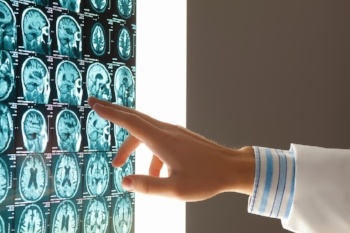 The process of diagnosis uses data collection and complex analysis to determine a patient’s health and course of treatment. Accurate diagnosis is the most critical aspect of health care.
The process of diagnosis uses data collection and complex analysis to determine a patient’s health and course of treatment. Accurate diagnosis is the most critical aspect of health care.
Diagnostic imaging serves as a precursor for deciding a patient’s journey towards therapeutics or surgery. The growing prevalence of chronic diseases globally has led to a subsequent increase in the number of diagnostic imaging procedures being performed each year. This, in turn, has called for more advanced imaging technologies and software to facilitate precise diagnosis.
Below are five notable trends in the diagnostic imaging market to watch in 2018.
1. Hybrid Imaging Technology
The most sought-after advancement in imaging technology has been that of hybrid imaging. The most significant development in this regard has been the innovation of hybrid imaging systems like the PET/CT. This hybrid modality has been so successful that major imaging system manufacturers do not provide standalone PET systems any longer.
Based on the success of hybrid PET/CT systems, hybrid PET/MRI and SPECT/CT systems have also gained attention. These hybrid systems can provide precise images with better resolution compared to standalone systems. They can provide morphological as well as physiological information in just one examination. For instance, in case of skeletal evaluation, a SPECT/CT system offers accurate localization along with improving the specificity of information provided by CT. Due to advantages such as these, many hospitals are now replacing their standalone systems with hybrid systems.
Due to advanced technologies and the increasing prevalence of oncology, the nuclear imaging and markets are likely to show promising growth opportunities.
2. Imaging Systems with Lowered Doses of Ionizing Radiation
Another noteworthy technological advancement has been the development of diagnostic imaging systems with lowered doses of ionizing radiation, thus reducing the harmful effects of radiation on patients as well as technicians.
Major players in medical imaging technology are continuously striving to gain a competitive edge by reducing the radiation dose in imaging systems. Moreover, the shift from analog to digital systems offering more accurate, faster, and hassle free imaging in X-ray imaging, fluoroscopic imaging, and C-arms is further spurring market growth.
3. Contrast Agents in Diagnostic Imaging
Furthermore, the global rise in the number of patients with chronic diseases (cancer, Alzheimer’s, and cardiovascular diseases) has resulted in a significant increase in the demand for diagnostic imaging procedures and, in turn, contrast media/agents. Owing to this increased demand, governments across the globe are increasingly granting approvals for the use of various contrast agents in diagnostic imaging procedures.
- For instance, in May 2016, Bayer Healthcare (Germany) received FDA approval for Gadovist injection used in magnetic resonance angiography (MRA) in the US.
- Moreover, in April 2016, Bracco Diagnostics Inc., the US subsidiary of Bracco Imaging S.p.A. (Italy) received FDA approval for its new ultrasound contrast agent, Lumason (sulfur hexafluoride lipid-type A microspheres), for adults and pediatric patients.
Advancements in MRI techniques, such as the development of superconducting (SC) magnets, open architecture, high-field MRI, and software applications, are generating interest among academic institutes, research laboratories, hospitals, and physicians. Additionally, the advent of MRI-compatible pacemakers will significantly increase the number of patients eligible for MRI procedures.
4. Cryogen-Free Preclinical MRI Scanners
Also, the development of cryogen-free preclinical MRI scanners has served as a vital step to overcome the challenges associated with the depleting helium gas supplies across the globe. The speed of image acquisition remains a key target area for MRI technology developers, as high speed of acquisition will expand the application areas of MRI to cardiac imaging and time-resolved contrast enhanced angiography. Such technological advancements focusing on improving the functionality of MRI systems and expanding their application areas are expected to drive the demand for MRI systems among end users in the coming years.
5. Automated CT Scanners
Over the last decade, the diagnostic imaging market has witnessed significant technological advancements in the field of computed tomography, including the emergence of low-dose and automated CT scanners. These devices offer high image quality with improved spatial resolution and low radiation exposure to the patient as well as surgeons. These advanced CT devices have a simplified console, offer ease of operability, and provide affordable installation with minimal space requirements. These factors are driving the adoption of such products among healthcare professionals and researchers across major healthcare markets worldwide.
Where to Learn More
MarketsandMarkets has released dozens of reports about diagnostic imaging. I've included links to reports on various topics in the article above.
If you need a comprehensive look at the market, please see the report Diagnostic Imaging Market - Global Forecast to 2021, which covers the following products:
- X-ray imaging
- MRI
- Ultrasound
- CT
- Nuclear imaging
This 248-page report analyzes industry trends, market share, competitive landscape, and emerging and high-growth segments, as well as key drivers, restraints, challenges, and opportunities.
To read the report's abstract and learn more, click the report page link or use the button below.
About the Author: Hanifa Sheikh is a Senior Healthcare Analyst at MarketsandMarkets, a global market research and consulting company.


